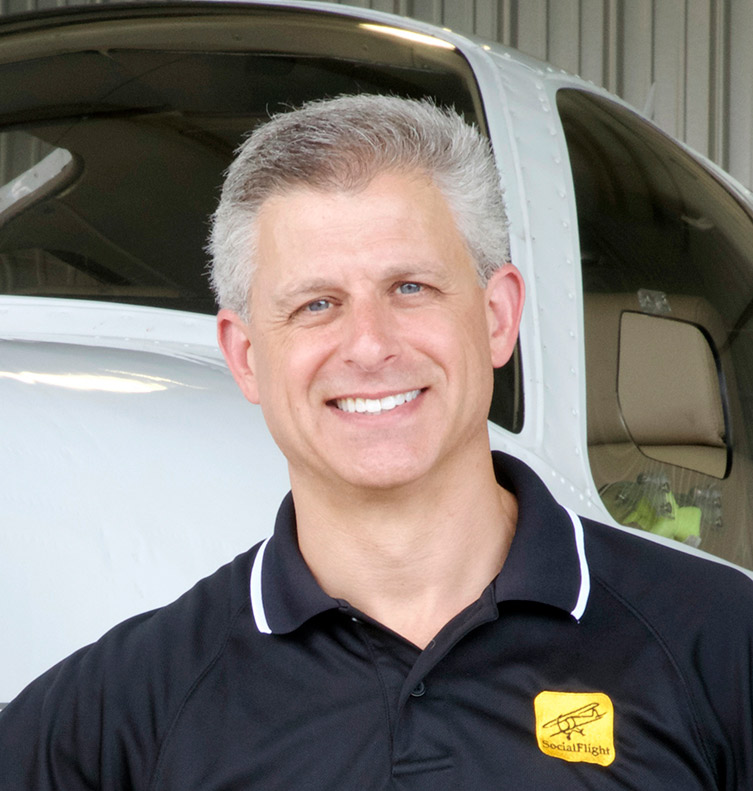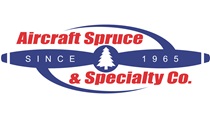Aircraft Maintenance: Climate change for the cabin
One of the challenges of summer flying is dealing with the extreme heat in the cabin of most poorly ventilated general aviation aircraft. Fortunately, there are several options to help keep you comfortable, healthy, and focused on the task of flying the aircraft.
We’ve all been taught to leave the doors or canopy cracked open while on the ground. It certainly helps with airflow, but it can only do so much. Once the doors are closed, the only relief to be found is at altitude. More than once, I’ve seen this race to cooler air cause pilots to rush critical tasks, let a door pop open, fail to follow proper procedures, or worse. For those aircraft or flights where reaching cooler temperatures at altitude isn’t an option, heat in the cabin can cause dehydration, distraction, and heat exhaustion—putting the safety of the flight at risk.
Solar radiation comes in several forms. Visible and ultraviolet (UV) radiation affect our eyes, cause sunburn and skin damage, and contribute to heating. However, infrared radiation energy is the main culprit of dehydration and exhaustion because this energy is converted directly into heat and is the primary contributor to the sensation of warmth that we experience in the sun. As pilots, we need to mitigate the types of solar radiation differently, depending on the situation. The best way to reduce or eliminate infrared radiation is to dramatically dim or completely block the sunlight from entering the cockpit. This isn’t practical or safe for the forward windows and windshield, which are critical for spotting traffic and flying the aircraft (even if flying under instrument flight rules). However, in aircraft that have aft windows, it might make sense to place opaque, removable window shades to completely block the sun’s energy. Up front, you can install shades of varying tint levels that reduce visible, UV, and infrared radiation, while still allowing safe operation of the aircraft.
I’ve seen several pilots use inexpensive, stick-on or suction-cup shades that they strategically position to block the sun while flying. There are several issues with this approach. First, these designs can trap dust and dirt between the material and the window, causing scratches over time. Second, and more importantly, a solution that only reduces sunlight directly on the pilot or passenger will still heat up other parts of the cabin. This may reduce the effect of the sun on your body, but it still generates a significant amount of radiant heat that radiates from everything else in the aircraft. Products that cover the entire window area are far more effective. Jet Shades, for example, are custom-fit, removable sunshades that reduce infrared heat, glare, and harmful UV rays, protecting the entire cabin from the sun’s damaging effects. You can choose different tint levels based on window location, striking a balance between safety and heat control. Jet Shades are also easily removable and designed to protect the windows from damage.


The second form of cabin heating is caused by ambient air temperature and airflow. Most GA aircraft have some form of ventilation built in. These systems are generally “caveman crude,” and few offer built-in fans for circulation. This means that cooling is completely dependent on the airflow from a moving aircraft, as well as the outside air temperature coming into the cabin. The best you can do to maximize the benefit of these systems is to make sure that the vents and hoses are completely clear of debris or obstructions, and to make sure that the outflow valves are working. There are a few options to upgrade the vents themselves on some aircraft, but ultimately getting to an altitude with cooler air is your best bet.

The best solution for reducing ambient air temperature is to “condition” it. The term "air conditioning" refers to the process of treating air to control its temperature, humidity, and purity. This can be done in several ways. Portable systems exist from companies such as B-Kool that utilize a cooler filled with ice water to circulate the chilled water through a heat exchanger, and blow cooled cabin air out of a hose into the cabin. These systems run on 12 volts to power the water pump and blower fan, and use very little power. The downside is that you need to plan ahead with lots of ice, account for the weight of the ice-filled cooler (up to 30 pounds depending on how much ice you use), and the ice may be used up in less than an hour.
Another type of cooling system uses the evaporation of water to absorb the energy of the hot air in the cabin to reduce the ambient air temperature. These systems, sometimes referred to as “swamp coolers,” require a water supply to function and are only effective in low humidity environments (where the water can readily evaporate). Beechcraft tried these designs in some early models, but they weren’t very effective and most have been removed from service.
The most effective air conditioning systems are true heat transfer systems that utilize a refrigerant cycle to move heat from inside a space to the outside, effectively lowering the temperature of one space while raising the temperature of another. This is a very important concept to understand. You may recall the law of conservation of energy, which is that energy cannot be created or destroyed, but can only be transformed from one form to another. In the case of the ice cooler, the ice absorbs energy from the hot air and changes into water. In the case of the swamp cooler, the water absorbs heat energy from the air as it evaporates into vapor. Regardless of the system, there is no “free lunch” when cooling air. To make air cooler, you have to use energy to move the heat somewhere else (hopefully outside of the cabin).
A traditional aircraft air conditioning system uses mechanical energy from the engine to drive a compressor. Alternatively, some systems utilize electricity from an alternator (derived from the engine power) to power a compressor via an electric motor. Regardless of the power source, compressed liquid refrigerant flows to an evaporator where it expands into a gas, absorbing energy and becoming cold. Air is blown over the evaporator coil, producing the cold air you feel coming out of the air vents in the cabin. The refrigerant (now a gas) is then pumped through a condenser where it releases its absorbed heat outside of the aircraft as it condenses back into a liquid. This design means that these systems have two forms of airflow: outside air cooling the hot condenser (producing hot air), and cabin air flowing through the cold evaporator (producing cold air).
While some new aircraft can be purchased with air conditioning installed, there are several retrofit air conditioning systems for GA aircraft. I recently took the plunge and installed the A/C Services air conditioning system in my 1975 Beechcraft A36 Bonanza. It was a significant investment, but I can honestly say that it has changed my flying experience beyond my expectations. The A/C Services system is a fully automatic environmental system that controls both the air conditioning and heat in the aircraft in the same way that most modern cars do. It’s a “set and forget” system with a digital computer and a control panel that allows you to simply select a desired cabin temperature and let the system do its work. The compressor is driven directly by the engine, which I prefer because it eliminates the extra steps of converting mechanical engine power to electrical energy and back again to mechanical energy at the compressor. This mechanical design also supports 14V aircraft, such as mine. The clunky heat cables in my 50-year-old aircraft have now been replaced by servos directing airflow as needed, managing air conditioning, heat, and defrost functions. The weight impact was quite reasonable at around 40 pounds installed, and it barely changed my center of gravity since the compressor is up front and the evaporator and condenser units are in the back. It also included a replacement of the headliner, with new overhead vents, lights, and other components. The unit can be used in all phases of flight, including takeoff.
My first real flight experience with the new system was coming home from visiting Brian Schiff in Dallas, where we hosted a live Cockpit2Cowl podcast. Departing Dallas, the temperature on the ground in the morning was around 70 degrees Fahrenheit, expected to rise to 100 degrees Fahrenheit during the day. On climbout, I found that there was a significant temperature inversion with outside air temperatures reaching nearly 87 degrees Fahrenheit at 7,000 feet msl. In spite of the high air temperature, I cruised along with the cabin temperature at a wonderful 68 degrees Fahrenheit for the entire nine-hour journey home to Boston (stopping along the way for food and a chance to sweat while fueling up). Combined with a set of Jet Shades that I plan to add to the aircraft, I’ll never again need to worry about being miserable while flying on a hot summer day.
Regardless of your aircraft or budget, there are options available to help reduce the impact of hot summer flying weather. Portable cooler-based systems cost $200 to $300, custom shades can cost over $1,000, and full-blown AC systems can easily top $30,000 installed. There are companies working on portable/removable versions of traditional vapor-cycle AC systems, but they will still require the power source and external heat venting of a traditional system, so the jury is out as to whether these ideas will ever be truly practical. There are no miracle solutions, so avoid the temptation to waste your money on magic boxes that claim to defy the laws of thermodynamics. They’re more likely to simply drain your wallet than chill your cockpit. Oh, and don’t forget the sunscreen. Until next time, I hope you and your families remain safe and healthy, and I wish you blue skies.



